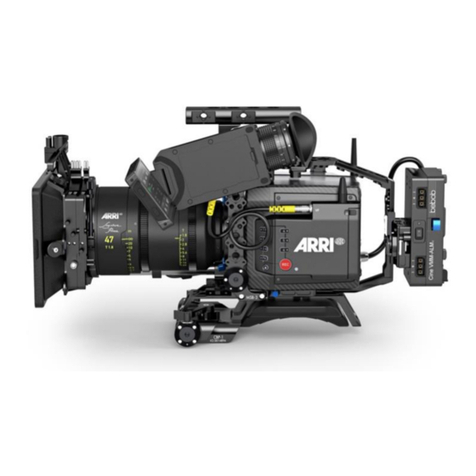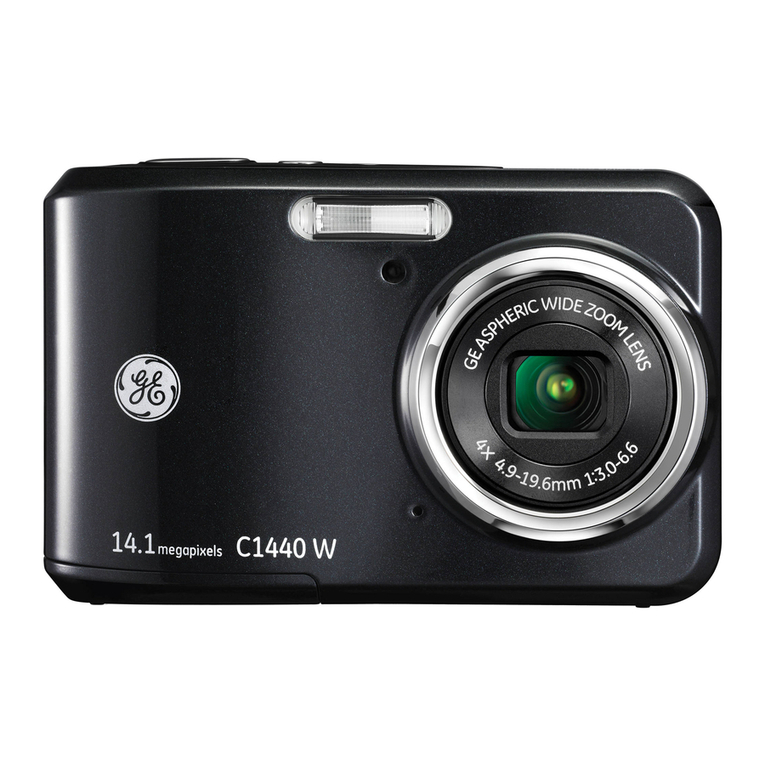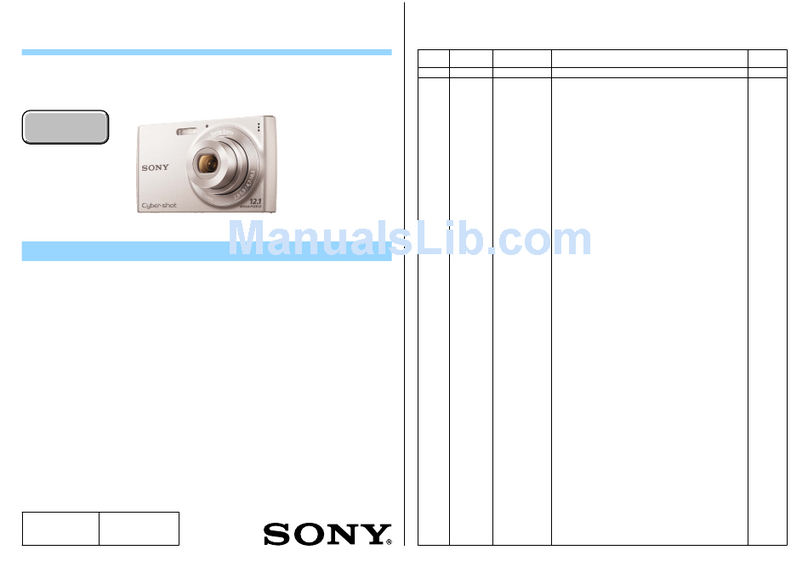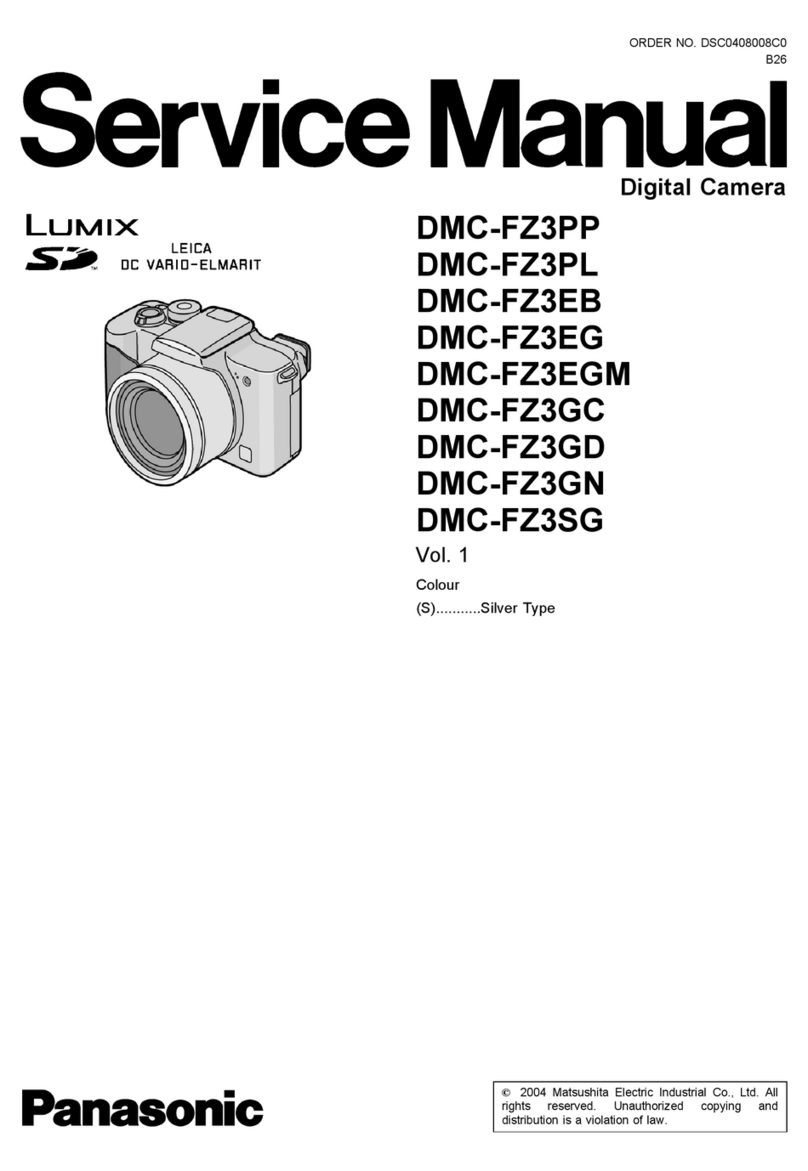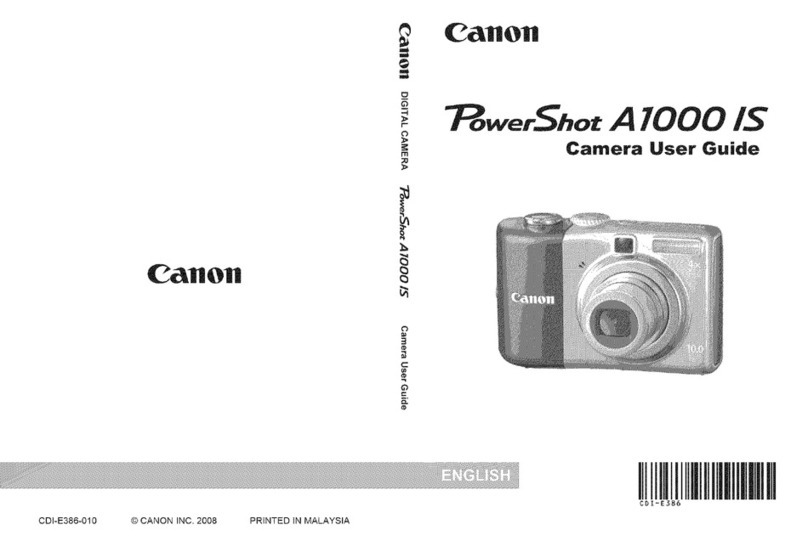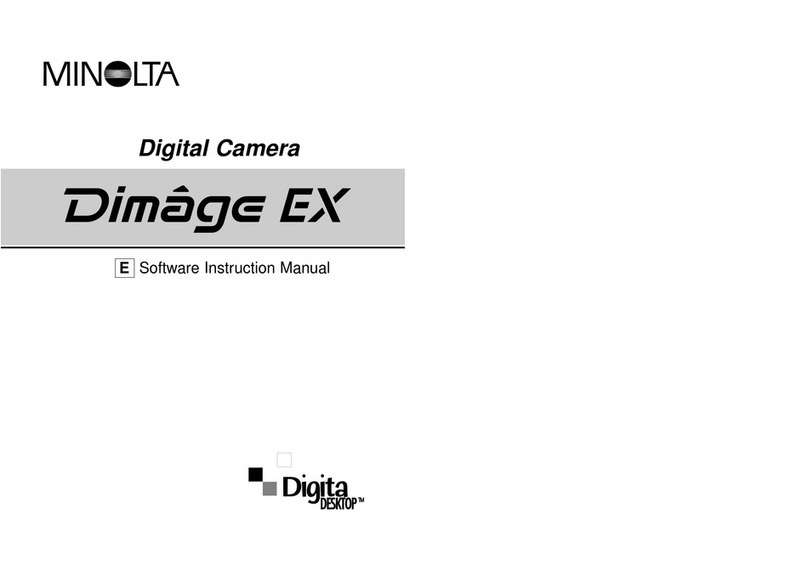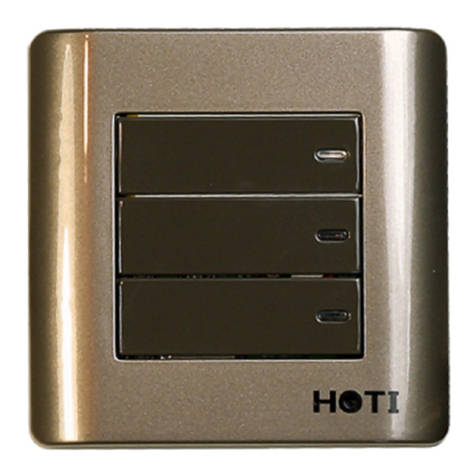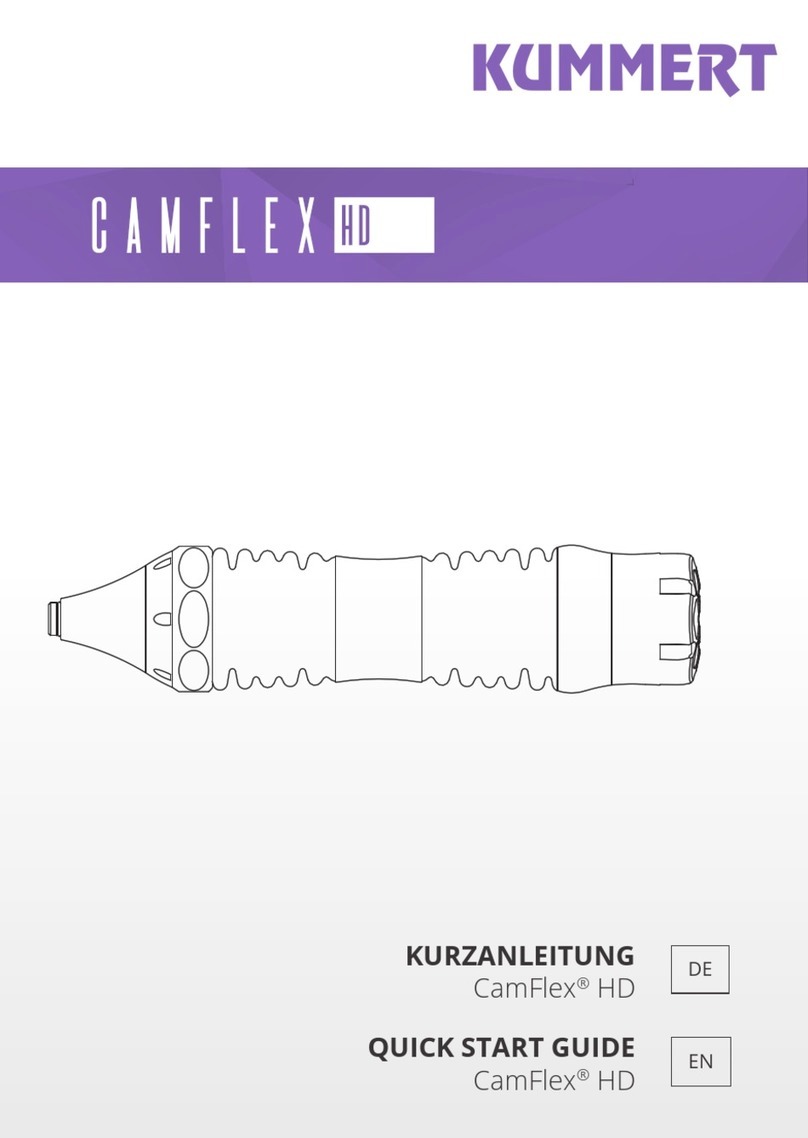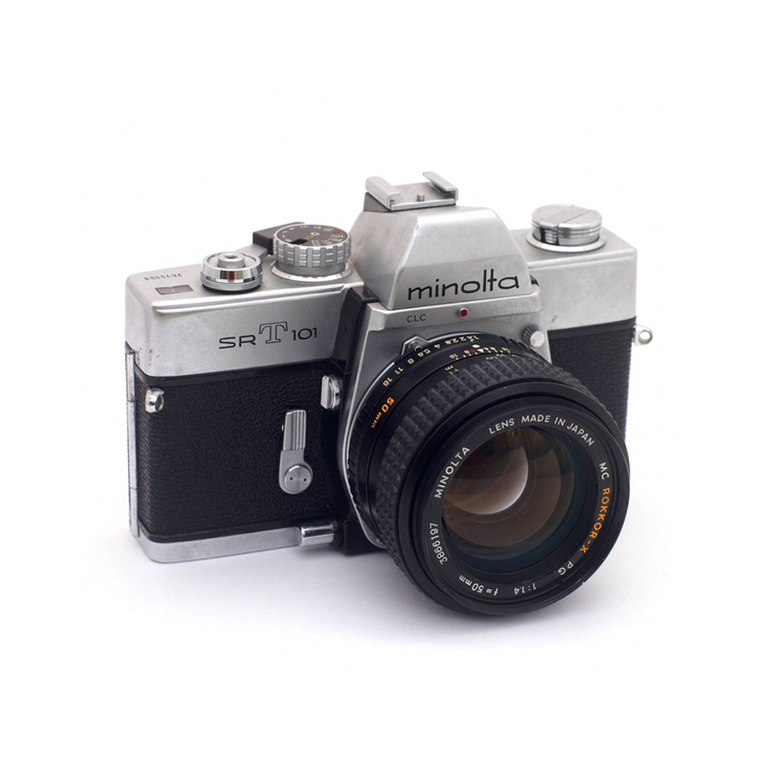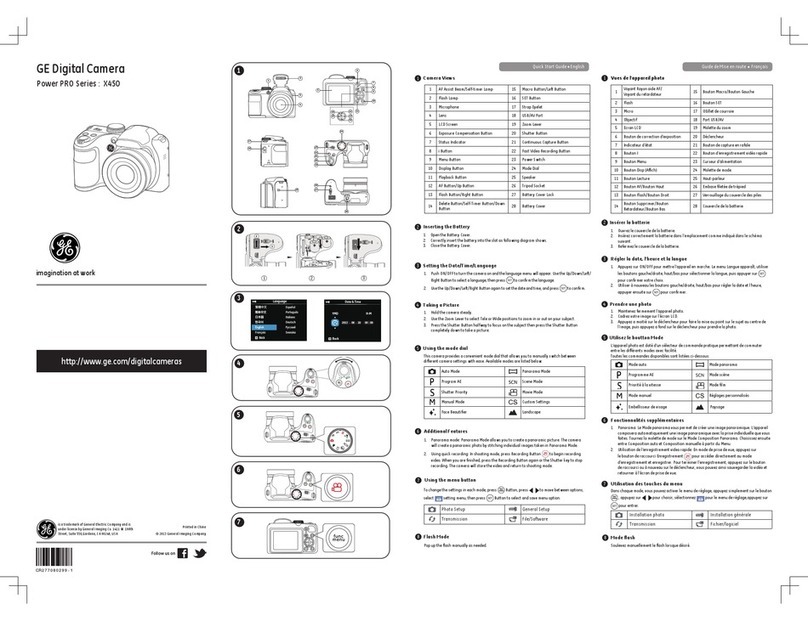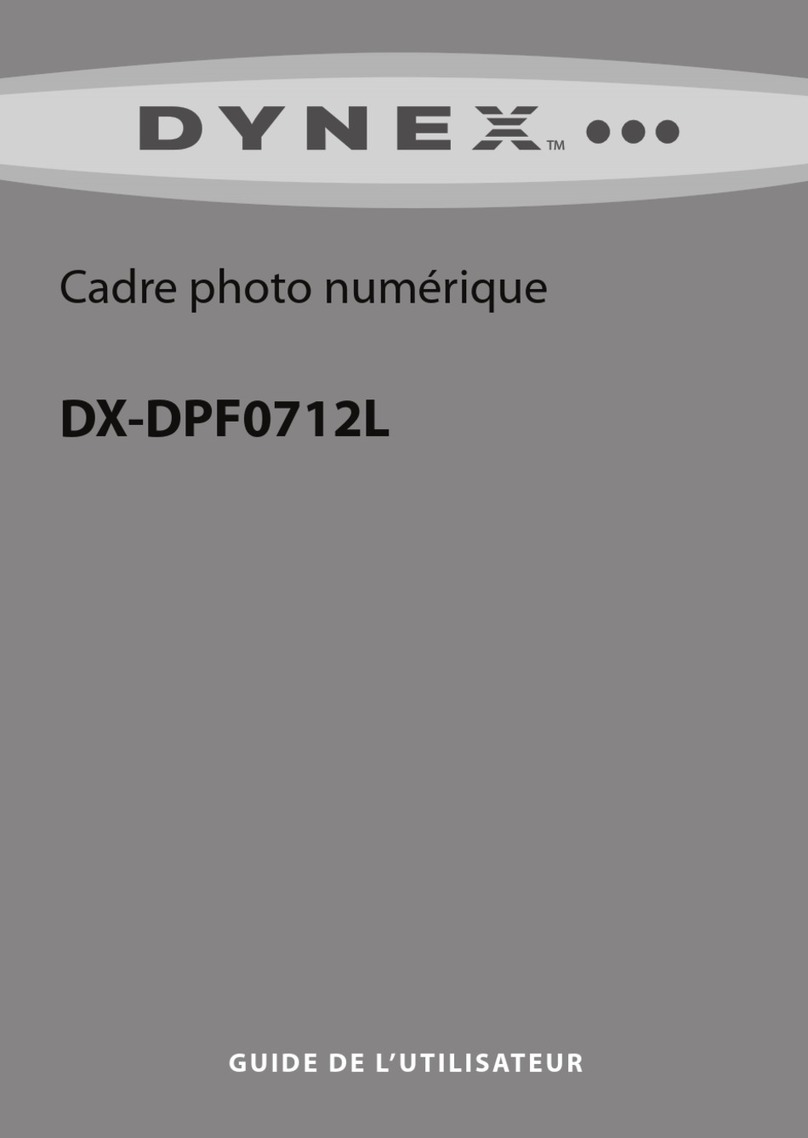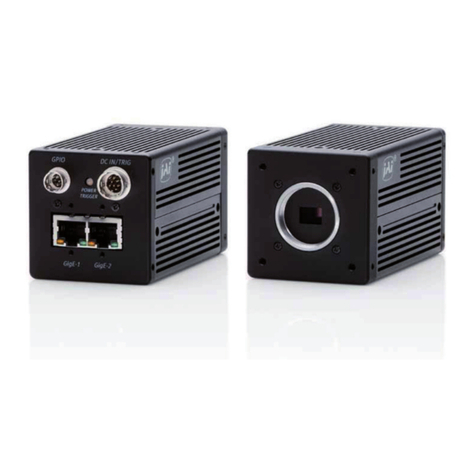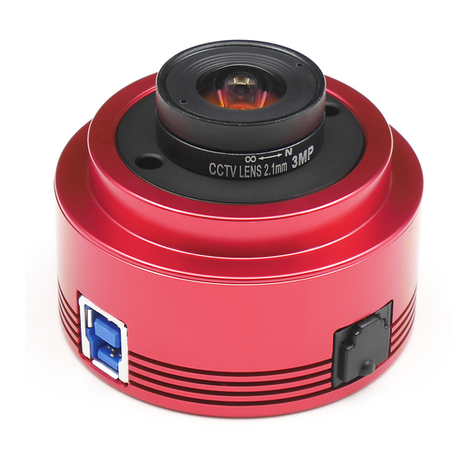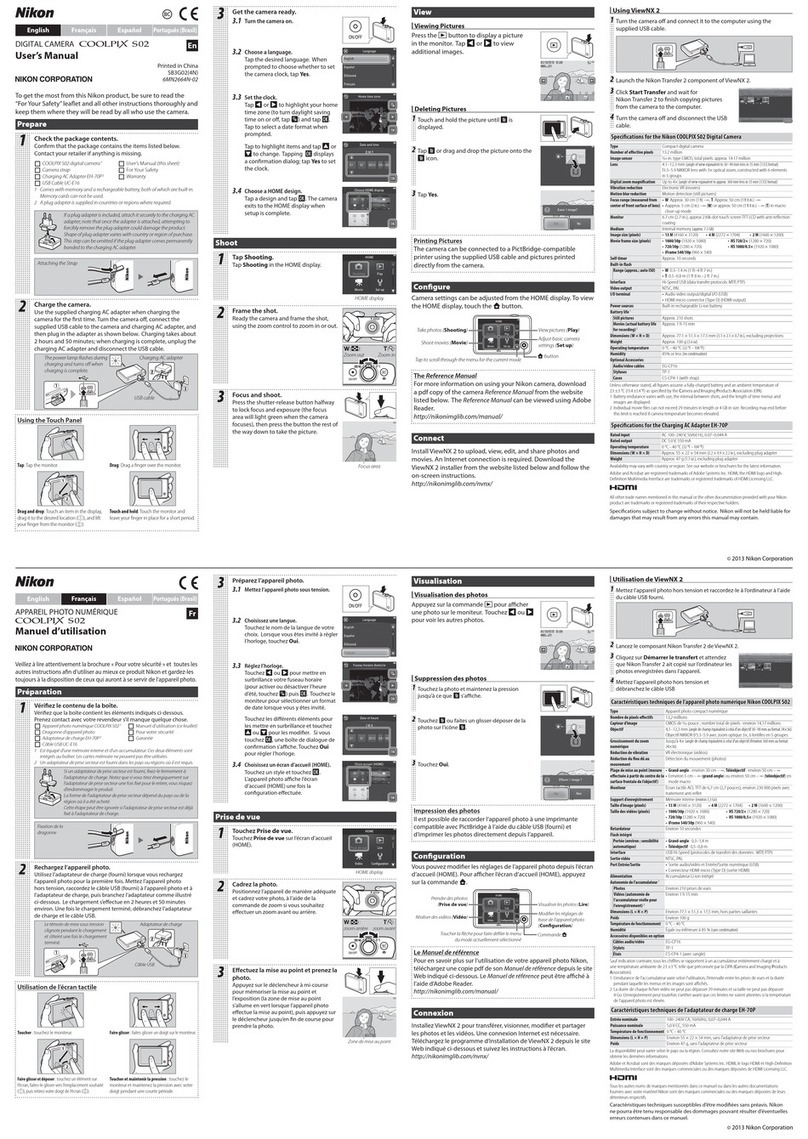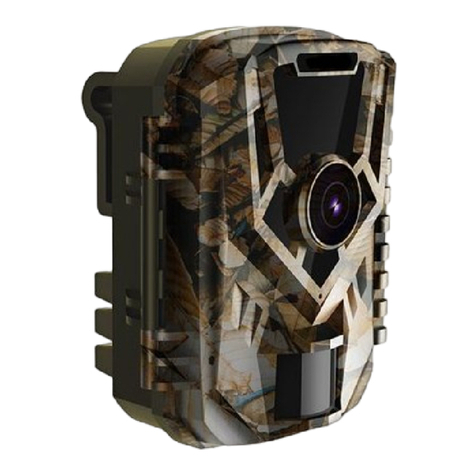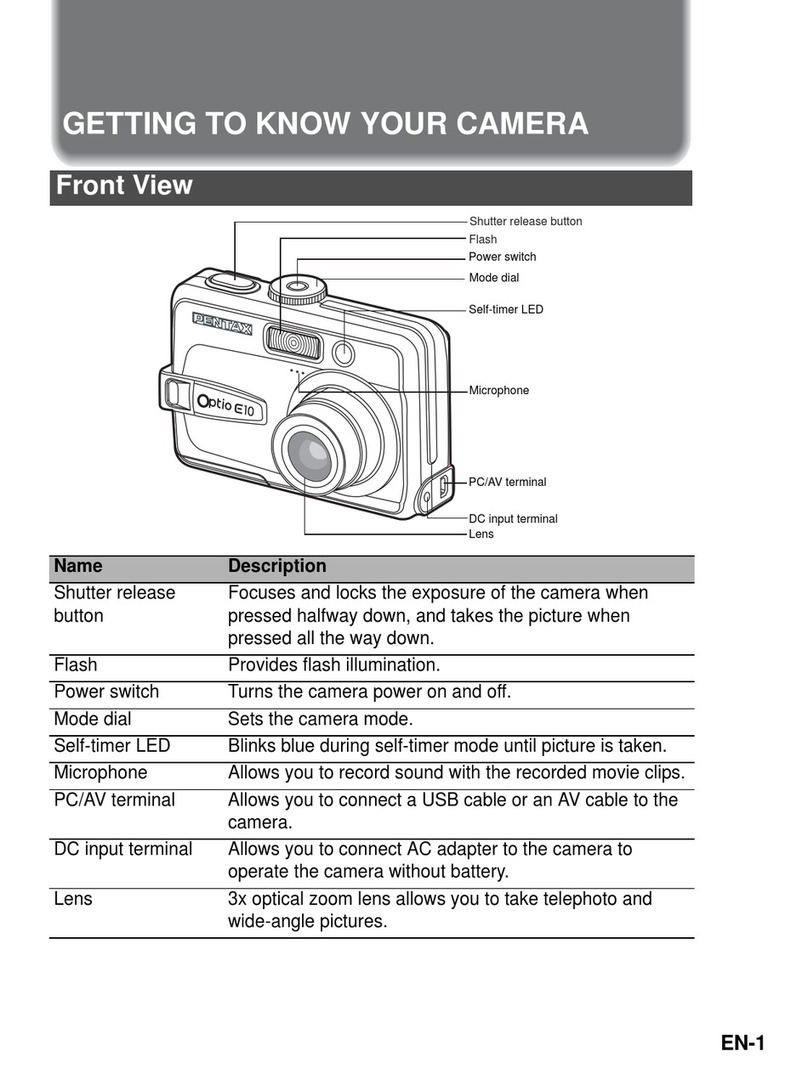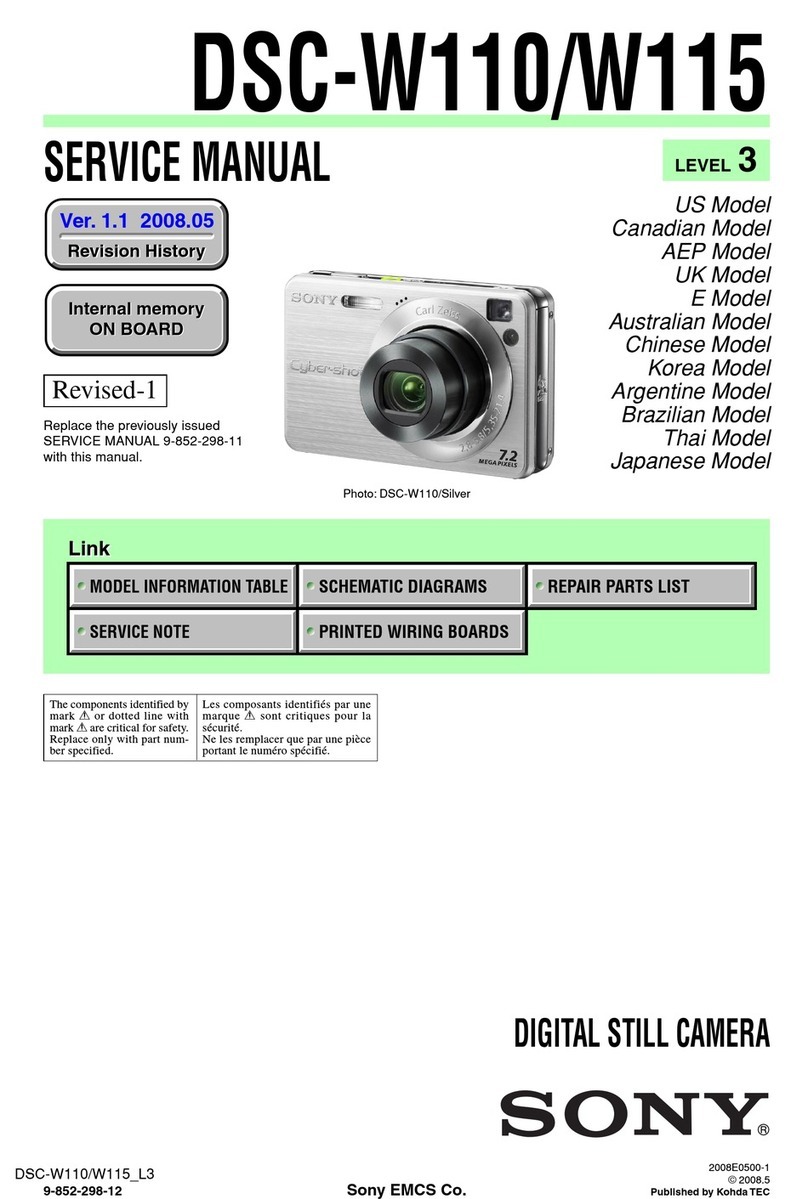ARRI AMIRA SUP 6.1.2 How to use

R E L E A S E N O T E S
AMIRA SUP 6.1.2
Software Update Package SUP 6.1.2:83
Date: February 1, 2022

AMIRA SUP 6.1.2 Page 2 of 12
Release Notes All data subject to change without further notice.
Table of Contents
A. Introduction.......................................................................................................................3
AMIRA SUP 6.1.2 Features and Changes Overview................................................................3
Updating..................................................................................................................................3
Downgrading........................................................................................................................... 3
Software Compatibility Notes.................................................................................................3
Registration.............................................................................................................................3
B. Legal ..................................................................................................................................4
Important Notes on Audience and Intended Use...................................................................4
Important Notes on Vital Precautions.................................................................................... 4
C. New Features and Changes in SUP 6.1.2...............................................................................5
D. Known Issues .....................................................................................................................6
Known Issues in SUP 6.1.2 ......................................................................................................6
E. Update Procedure.............................................................................................................12
Where to download the new Software Update Package (SUP) ...........................................12
Camera Update Procedure ...................................................................................................12

AMIRA SUP 6.1.2 Page 3 of 12
Release Notes All data subject to change without further notice.
A. Introduction
This document describes changes for AMIRA cameras with the new Software Update Package (SUP) 6.1.2.
SUP 6.1.2 has the same features as SUP 6.1.1, and includes important bug fixes and support for modified hardware
parameters.
We recommend that you take your time to go through these release notes, the known issues section of this document
and the user manual before you start using the camera.
For more information on the camera, please visit arri.com/amira or
arri.com/en/camera-systems/cameras/arri-multicam-system
For a listing of answers to frequently asked questions please visit
arri.com/en/learn-help/learn-help-camera-system/frequently-asked-questions/amira-faq.
AMIRA SUP 6.1.2 Features and Changes Overview
•Bug fixes
•Support for modified hardware parameters
Updating
For all AMIRA owners we recommend updating to SUP 6.1.2
•AMIRA SUP 6.1.2 can be installed on all previously shipped AMIRA cameras. However, we recommend
updating from SUP 6.1.1 to SUP 6.1.2 (note: this can take up to 20 Minutes). If your camera is not running
SUP 6.1.1, please update it to 6.1.1 before updating to SUP 6.1.2. AMIRA SUP 6.1.1 is still available on the
ARRI website.
•We do not recommend installing a new SUP in the middle of a production. The only exception is if any of the
errors described in "New Features and Changes in AMIRA SUP 6.1.2" below prevent you from continuing to
use a camera. In that case, installing SUP 6.1.2 is recommended.
•Please note that the viewfinder might switch off during the update process and doesn’t give a visual feedback
of the update all the time. Make sure not to power off the camera during a SUP update. Detailed instructions
for the update process can be found at the end of this document.
•Always use a ‘private’ or ‘incognito’ browser window when using the Webremote to operate the camera and
to perform a SUP update. This prevents possible erroneous behavior.
Downgrading
While it is possible to downgrade AMIRA cameras to previous SUP versions from this version, we
recommend against this, since this SUP includes important bug fixes.
It is not possible to downgrade AMIRA cameras to previous SUP versions from this version, if the image sensor of the
camera is calibrated at a temperature of 35°C. This may be the case for cameras built by ARRI manufacturing or for
cameras that were calibrated in ARRI Service after the release of this software. The calibrated sensor temperature can
be found in INFO > SYSTEM INFO > Sensor temperature.
For a downgrade to a previous SUP version, the license file of the installed and of the previous version
(amira_fw_update_aes_x.x.x.lic) need to be available on the USB memory stick under /ARRI/AMIRA/LICENSES/.
Software Compatibility Notes
Please update the ARRIRAW Converter (ARC) to at least version 4.1.1.0 and ARRI Meta Extract (AME) to version
4.1.0.0.
Please note that macOS X version 10.15 with the Apple MXF plug-in installed (part of “Pro Video Formats 2.1”) is
required to play back downloaded MXF/Apple ProRes footage in Apple QuickTime Player.
Registration

AMIRA SUP 6.1.2 Page 4 of 12
Release Notes All data subject to change without further notice.
If you have not done so already, please make sure you register your camera using our online customer registration.
Your registration ensures that you receive information about future software updates as soon as they are available. If
you register your new camera within 1 month of purchase, you will get a 6-month extended warranty for free. You can
find the registration https://alshop.arri.de/register.
B. Legal
Important Notes on Audience and Intended Use
The product is solely and exclusively available for commercial customers and shall be used by skilled personnel only.
Every user should be trained according to ARRI guidelines. Use the product only for the purpose described in this
document. Always follow the valid instructions and system requirements for all equipment involved.
Important Notes on Vital Precautions
High voltage! Risk of electric shock and fire!
Short-circuits may entail lethal damage!
Before use, read and follow all valid instructions.
Use solely and exclusively as described in the instructions.
Never open. Never insert objects.
For operation, always use a power source as indicated in the instructions.
Always unplug the power cable by gripping the power plug, not the cable.
Never try to repair. All repair work should be done by a qualified ARRI Service Center.
Never remove or deactivate any safety equipment (incl. warning stickers or paint-marked screws).
Always protect from moisture, cold, heat, dirt, vibration, shock, or aggressive substances.
Never cover any fan openings.
Heavy weight! Risk of injury and damage!
If placed on an unstable surface, the camera can fall and cause serious harm!
Always place the camera on proper support devices. Safely attach it as described in the instructions.
For further important safety information, please refer to the user manual.
ARRI is continuously improving the camera hardware status over the lifetime of the product. This Software Update
Package was tested thoroughly on the latest hardware version and in addition exploratively on previous hardware
versions. If you experience issues other than listed in the Known Issues section of these Release Notes, please contact
ARRI Service.

AMIRA SUP 6.1.2 Page 5 of 12
Release Notes All data subject to change without further notice.
C. New Features and Changes in SUP 6.1.2
General improvements and bug fixes
•Several bug fixes have been included.
•Support for modified sensor temperature calibration has been included. ARRI manufacturing and ARRI
Service can calibrate sensor at a temperature of 35°C instead of 40°C using SUP 6.1.2. Installing SUP 6.1.2
does not change any calibration parameters of your camera.

AMIRA SUP 6.1.2 Page 6 of 12
Release Notes All data subject to change without further notice.
D. Known Issues
Known Issues in SUP 6.1.2
This is a list of known issues for the SUP 6.1.2 software package.
Accessories
•Record Start/Stop on Canon HJ18 B4 lens
In case the start/stop function on the Canon HJ18 B4 lens is not working with the ARRI B4 Mount and connected
Hirose cable, please execute a "Reset all" on the lens.
•Re-connecting Bluetooth devices after boot up
Some Bluetooth devices for audio monitoring are not always automatically reconnected when camera is booted.
Please make sure to manually reconnect your Bluetooth device in this case.
Audio
•Battery change with connected AES3 source
After changing the battery with a connected AES3 source, like a sound mixer, the audio function of AMIRA may not be
initialized properly. An error message may appear like "Switch in undefined position". Please reboot the camera in this
case. To avoid this issue, just power down the sound mixer before changing the camera battery. Using an audio
attenuator does address this as well, please contact ARRI service for more information.
•Potential audio glitches when booting down
Please be cautious for potentially loud audio glitches when wearing headphones while powering down the camera.
•Headphone output connected to an audio mixer
When the headphone output is connected to an audio mixer for monitoring the audio recording, the audio board may
be damaged if the camera contains the initial IAOU 1 audio board. This would only affect the volume of the
headphone out. If you recognize reduced maximal volume of the headphone output, this may indicate this damage.
Please contact an ARRI service center in this case. This behavior is not showing with the later IAOU 2 audio board.
Frame Grab
•Frame grabs are not supported at paused playback of interlaced S16 or HD clips
In order to perform a frame grab, grab the frame during playback at the desired position.
•Frame grab with CAP over WiFi fails
When activating a frame grab with CAP over a WiFi connection, the frame grab may fail. A CAP frame grab over a
Ethernet connection works fine.
•Frame grabs from ARRIRAW playback
Frame grabs taken from ARRIRAW playback may exhibit differences in pixel brightness on the edges of the frame.
Inputs/Outputs
•First activation of Return Input may show distorted image
After booting or setup of the camera, at the first switch from the live camera image to the return input, the SDI output
may show a distorted frame. With any following return activation, the switch will be clean.
•Wrong False Color mode at SDI 2
When setting the SDI 1 output to "Clean" and SDI 2 to "Processed", the False Color function will always show the
"Monitor Based" mode on the SDI output, also when it is set to "Log C-Based" mode. When SDI 1 is set to "Processed"
and SDI set to "Clean", the False Color function works as expected.
•SDI interlaced field order reversed with V/H flip
When activating a V or V+H flip, the field order of the interlaced format at the SDI outputs will be reversed.

AMIRA SUP 6.1.2 Page 7 of 12
Release Notes All data subject to change without further notice.
•Potentially distorted lines when SDI frame rate is larger than sensor frame rate
When setting the SDI output frame rate to 59,94 or 60 fps, while the recording frame rate is 50 fps (or smaller), there
might be line artefacts in the SDI image.
•Entering/exiting playback mode cause momentary signal loss
When entering or exiting the playback mode, the SDI outputs will show a momentary loss of the SDI signal if the
recording frame rate is double of the project frame rate, or if the recording format is interlaced.
•SDI status overlay may show wrong processing icon
Even when the processing mode is set to A709, on the particular SDI output a Log C icon may be shown.
•1.3x anamorphic desqueeze is not available for EVF zoom
1.3x anamorphic desqueeze is not applied to the EVF zoom image.
•1.3x anamorphic desqueeze is not available for UHD SDI output
1.3x anamorphic desqueeze is not applied to UHD SDI output 422 6G, DL 422 6G and 422 3G DL.
•Activating return in with SDI outputs in clone mode
A momentary signal loss may occur when activating return in with the SDI outputs set to clone mode.
•Monitoring in 3.2K with 1.3x anamorphic desqueeze
EVF/Monitor and SDI outputs may show scaling artifacts in 3.2K recording mode with 1.3x anamorphic desqueeze
enabled. The artifacts are limited to the monitoring outputs, they do not affect the recordings.
•HD-SDI output performance with DL 6G
For best DL 422 6G SDI output performance we recommend upgrading to the new SDI board IOAX Rev.H. For any
inquiries please contact your local ARRI service center.
•No Return-In in MPEG-2 mode with psf or interlaced signals
The Return-In input is not supported when the camera is in MPEG-2 mode and the return signals are psf or interlaced.
•Momentary image loss on SDI outputs when connecting a sync source
The SDI outputs re-synchronize when connecting a genlock or timecode source. While re-synchronizing a short image
loss may occur.
•Temporary image loss on SDI outputs when configuring 6G
When changing the SDI output to 6G, or when changing the SDI output from 6G to another format, both SDI outputs
may exhibit a short image loss.
•SDI outputs when using timecode sync
When using a timecode signal as sync source, the SDI outputs may not be precisely in sync to the sync source. For
precise SDI out sync to sync source please use a tri-level genlock signal.
Media
•Protection against cross platform CFast 2.0 formatting issues
Only CFast 2.0 cards that have been erased on ALEXA Mini or AMIRA running SUP 4.0 (or higher) can be used for
recording. This is for protection against issues caused by different CFast 2.0 formatting schemes used by other
cameras manufacturers.
Playback
•Playback mode "play next clip" skipping 50i/59.94i clips
Playback of multiple clips with project rate 50i/59.94i (with play end mode set to play next clip) might not play all clips
in succession but skip clips.
•Activating Playback does not disable peaking
Please disable peaking manually in case you do not want peaking during playback.

AMIRA SUP 6.1.2 Page 8 of 12
Release Notes All data subject to change without further notice.
•In Pause mode, interlaced clips only show half vertical resolution
This behavior can only be observed when playback is monitored on the SDI outputs.
•Interlaced clips jitter vertically when played back with SDI output not set to interlaced.
This only affects the playback in SDI, the recording is correct. Make sure to always match SDI the output configuration
to the project configuration (e.g.: 60i clips to be played back with 60i SDI output).
•Clips with HDR looks burned-in will not be correctly displayed on MVF and EVF
When playing back a clip that has a HDR look burned-in, it will not be correctly displayed on MVF and EVF, since both
are not HDR capable and no tone-mapping is applied. This is a monitoring problem only and does not affect the
recorded footage. However, we generally do not recommend burning in looks when shooting HDR content.
Recording
•Power loss during record with CFast 2.0 cards
A CFast 2.0 card may need to be reformatted when it is removed during recording or in the event of a sudden power
loss occurs while the camera is writing to the card. The camera will indicate the error with a warning message. Please
follow the instructions in the warning to avoid damage to the card or further recordings. No action is required if no
warning is displayed. Please contact ARRI service for more information or if you encounter any further issues.
•Indicated available recording time with MPEG 2
In MPEG 2 recording mode, the available recording time displayed by the camera may be shorter than the actual
available recording time. I.e. there might be more recording time available on the card than indicated.
•SanDisk 120GB and 60GB cards
In very rare cases, recording can be interrupted with an error message: "Write failure on recording card (Slot A)" with
SanDisk 60GB or 120GB cards.
•Vertical image mirroring is applied as clip metadata
Mirroring information is stored as metadata in QuickTime files. MPEG-2 HD MXF files do not support mirroring via
metadata, so the clips play back without mirroring applied.
•Error message for maximum clip size.
On very rare occasions, the camera may stop recording and report "Recording stopped - maximum clip size reached".
This can only occur with image content that has very little detail and using a codec with low data rate like ProRes LT.
•Limited amount of reels on CFast 2.0 cards
Recording on CFast 2.0 cards is limited to 15 reels per card in ProRes and ARRIRAW MXF. With MPEG-2 HD 422 the
limit is 2 reels. If the maximum number of reels is reached, recording is still possible if no further reel needs to be
created.
•Start recording from playback in MPEG or ARRIRAW mode
Starting a MPEG or ARRIRAW recording directly from playback can fail with error message: "Recording stopped due to
FPGA failure. Please reboot camera." Please exit playback before starting to record.
•Noise Reduction in "Strong" mode
The "Strong" mode in Noise Reduction (available in S16 HD, 3.2K, 4:3 2.8K and 4K UHD) may result in image artifacts
with fast moving objects. We recommend testing this accordingly before using "Strong" mode.
•Limited scaling quality in HD-SDI outputs when recording in 2K
The resulting image quality is considered as sufficient for monitoring but may be limited for recording the signal as the
master record. This is due to the downscaling of the 2K resolution to HD. Please set the recording format to HD when
recording HD on the HD-SDI output as master record.

AMIRA SUP 6.1.2 Page 9 of 12
Release Notes All data subject to change without further notice.
•Recording high data rates with SanDisk 120GB or 128GB cards in slot B at high temperatures
Using SanDisk 120GB or 128GB cards at extremely high environmental temperatures well above 40°C or 104°
Fahrenheit, and recording ProRes 4444 at highest frame rates close to 200fps, the card slot B might be limited in the
maximal duration of recording. Please use CFast slot A for longer recordings if the above conditions are met.
•Changing Exposure Index or White Balance during record
When changing Exposure Index or White Balance during record it is possible that a single frame contains two different
image characteristics.
•Camera sometimes does not prompt to format a non ARRI_UDF CFast card
While the MVF Display is set to live view mode, the camera will not prompt to format a CFast card, even the file
system on the card is not the ARRI_UDF file system, but FAT32, ExFAT or other.
Timecode
•Syncing the sensor via LTC timecode requires a precision timecode generator
A precision generator with low jitter is required when using an LTC timecode signal to genlock the camera. Devices
that work without a problem as standard LTC timecode source may not work as LTC genlock source.
•Syncing multiple cameras using timecode
When syncing multiple cameras using timecode sync and timecode mode regen, some recorded clips may exhibit a
timecode offset of one frame with project rates above 30fps.
Update
•LBUS devices cannot be updated using an AMIRA
LBUS devices (Master Grips, CForce motors, LCUBE) cannot be updated on the AMIRA using cable EXT - LBUS. Please
use an ALEXA Mini, an UMC-4 or a WCU-4 with cable LCS - LBUS, or contact your local ARRI Service.
Usability
•User buttons trigger two functions
While in playback, the camera user buttons UB1, UB2, UB3, UB5, UB6 and UB7 erroneously trigger two functions
when used, the designated function and additionally a playback functionality. If using the functions while playback is
required, the functions can be assigned to the cameras user buttons UB4 or UB8 or to the viewfinders user buttons
VF1 and VF2 which behave as expected while in playback.
•Web remote function not working properly after SUP update
After updating the camera, the web remote function may not work properly unless the browser cache of your web
browser has been cleared.
•QR code scan may fail with activated SDI frame lines or peaking
When a QR code is used for the WiFi setup of the camera, the scan may fail if frame lines or peaking in the SDI outputs
are activated. Just de-activate temporarily to scan a QR code.
•Mode switch not smooth when MVF-1 and CCP-1 is connected
With a daisy-chained MVF-1 and CCP-1 and the MVF-1 being in active mode: when switching from ProRes to ARRIRAW
or vice versa, the display will show a black bar and fade to black. The mode switch itself will be executed correctly.
•Waveform display is not refreshed after mode change
When the waveform display is activated on the viewfinder and the recording resolution is changed, the waveform
display will not be updated. To refresh the waveform display, just toggle WFM OFF/ON.
•Frame lines with names longer than 32 characters are not supported
Frame lines with names longer than 32 characters are not supported.
•Zebra function is limited to 99%
The Zebra function has its highest limit setting at 99%.

AMIRA SUP 6.1.2 Page 10 of 12
Release Notes All data subject to change without further notice.
•CAP server frame grab while camera is in playback
A frame grab triggered through CAP server during internal camera playback grabs a live image from the sensor instead
of a playback image.
•Starlite-HD5ARRI can change settings or trigger a recording even if UI is not displayed on screen.
If the Starlite-HD5ARRI is connected to a SDI output showing "CLEAN" output, settings may be changed without notice
when touching the respective areas on the screen. Please make sure the Starlite-HD5ARRI is connected to an SDI
output that is set to "PROCESSED" to see the touch interface.
•MPEG-2 playback in camera
In some rare cases, playback of an MPEG-2 clip may be interrupted. You can still check the clip in camera by fast
forwarding with various speeds. In doubt, please play back the clip on a computer.
•Updated EF mounts not compatible with SUP 4 release
Reverting the camera software to SUP 4 does not downgrade the EF mount software. An EF mount that has been
updated with SUP 5.x will not work in that case.
•User setups created with earlier SUPs are not compatible with SUP 6.1
User setups created with SUP 5 or earlier SUPs cannot be loaded with SUP 6.1
•Mirror image vertical flip is not applied to frame grab
When using the mirror image setting, only the horizontal flip is applied to the frame grab.
•Simultaneous use of timecode mode jam sync and genlock sync is not supported
When using timecode mode jam sync or when using genlock sync, the camera adjusts an internal oscillator to match
the source clock. Hence using a combination of timecode mode jam sync and genlock is not supported.
•During erase, Record is not possible on other card
During card erase it is not possible to record to the second card. It is also not possible to change any camera settings
while cards are erased.
Viewfinder
•ZOOM or SURROUND VIEW at very low framerates
The MVF-1/MONITOR's image momentarily fades when either zoom or surround view get activated or de-activated at
very low frame rates (below 5 fps).
•For MVF-1 up to serial number 2150 which are not upgraded to the new eyepiece
The viewfinder sometimes may not switch on as it uses a proximity sensor to activate the OLED display only while the
eyepiece is in use. Approaching the MVF at an unfavorable angle may cause it not to trigger properly.
•Calibration applied ten seconds after initial connection
When connecting a MVF-1 with the new OLED viewfinder panel built in for the first time, it might take up to ten
seconds before the new viewfinder calibration is loaded and applied.
Multicam
•Master black pedestal CAP control only in Multicam mode
CAP commands for the Master Black Pedestal and the other video parameters, are only executed if the Multicam
mode on the camera is activated.
•AMIRA with IAOX-M: Genlock Sync option ref in/analog
For AMIRA cameras equipped with the modified SDI board "IAOX-M" (like the AMIRA CL), the Genlock Sync menu does
not show the ref in/analog option at the first boot up after installation of SUP 6.1. With any further boot, the option
will be displayed.

AMIRA SUP 6.1.2 Page 11 of 12
Release Notes All data subject to change without further notice.
•RCP iris control with CAP
When using the CAP protocol to control the lens iris, either the "Multicam" mode needs to be activated, or the option
"Lens switch Triggers auto iris"(HOME/EXPOSURE-INDEX/IRIS/OPTIONS) needs to be deactivated.
•Genlock sync function requires a stable return input signal
For a stable genlock sync, the return input signal must be a clean signal without distortions.
•RCP values may not be consistent
The parameter values on the RCP are not mirrored in the positive and the negative range, eg. max values: -87/+89.

AMIRA SUP 6.1.2 Page 12 of 12
Release Notes All data subject to change without further notice.
E. Update Procedure
Where to download the new Software Update Package (SUP)
You can find the Software Update Package in the Software Update Packages download section. A SUP can be installed
on the camera by using a USB stick as described in detail below.
Camera Update Procedure
The AMIRA software is updated from a USB memory stick. The SUP will update the AMIRA camera along with the
Viewfinder (MVF-1), CCP-1 and the lens mount –provided they are connected to the camera.
The update can be started through the menu of the MVF-1 viewfinder or through the Web Remote. The Web Remote
requires a connection to the camera via WiFi or Ethernet (with ALEXA Ethernet/RJ-45 Cable KC-153-S, K2.72021.0).
Open a web browser and enter the URL: http://amira-xxxxx.local (replace xxxxx with your camera's 5-digit serial
number). For further information on the Web Remote, please refer to the User Manual.
▪After the download, please double click the downloaded file (*.zip) to unpack it or unpack it manually. This
will place two update files (*.SUP and *.lic) and the SUP release notes onto your computer.
▪If not done beforehand, prepare the USB memory stick for use with AMIRA by connecting it to the camera.
Then choose Menu > Media > Prepare USB Medium... in the camera’s menu on the MVF-1 flip-out monitor
and press CONFIRM. This will create the required folder structure on the USB stick.
▪Connect the USB stick to your computer and place the downloaded *.SUP file in the folder ARRI/AMIRA/SUP
on the USB stick. Then place the downloaded *.lic file in the folder ARRI/AMIRA/LICENSES on the USB stick.
▪SUPs contain not only updates for the camera body. Therefore, the MVF-1 viewfinder, CCP-1 and the lens
mount should be attached to the camera when performing an update.
▪Make sure the camera is connected to a power supply (best) or is powered with a full battery to avoid power
loss during the update process.
▪Perform a factory reset on the camera with the menu item Menu > Setup > Factory Reset...
▪Remove the recording media from camera.
▪Connect the USB stick to the camera and navigate to the menu item Menu > System > Update Camera...
▪Select the SUP file from the list and click the item.
▪In the following message, press INSTALL to start the installation.
▪Press CONFIRM to start the installation.
▪The camera will present a screen presenting the update progress. Please do not shutdown the camera or
unplug power until the camera reboots.
▪After the update process has finished, a success message is displayed. Please repeat the last steps and update
the camera for a second time.
▪Make sure you set the correct time zone in Menu > System > System Time & Date.
▪If the MVF-1 viewfinder, CCP-1 or lens mount were not connected to the camera during the update process,
the camera will still store the new software for those devices. The next time those devices are connected and
have an older software than the one stored in the camera, the camera will offer to update those devices.
Table of contents
Other ARRI Digital Camera manuals
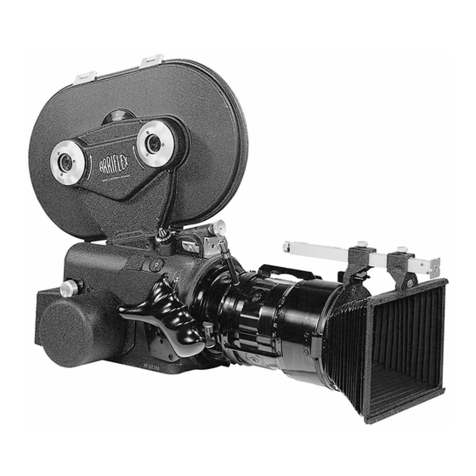
ARRI
ARRI ARRIFLEX 16 BL User manual

ARRI
ARRI ALEXA User manual

ARRI
ARRI AMIRA SUP 4.0 How to use

ARRI
ARRI ARRIFLEX 16 St User manual
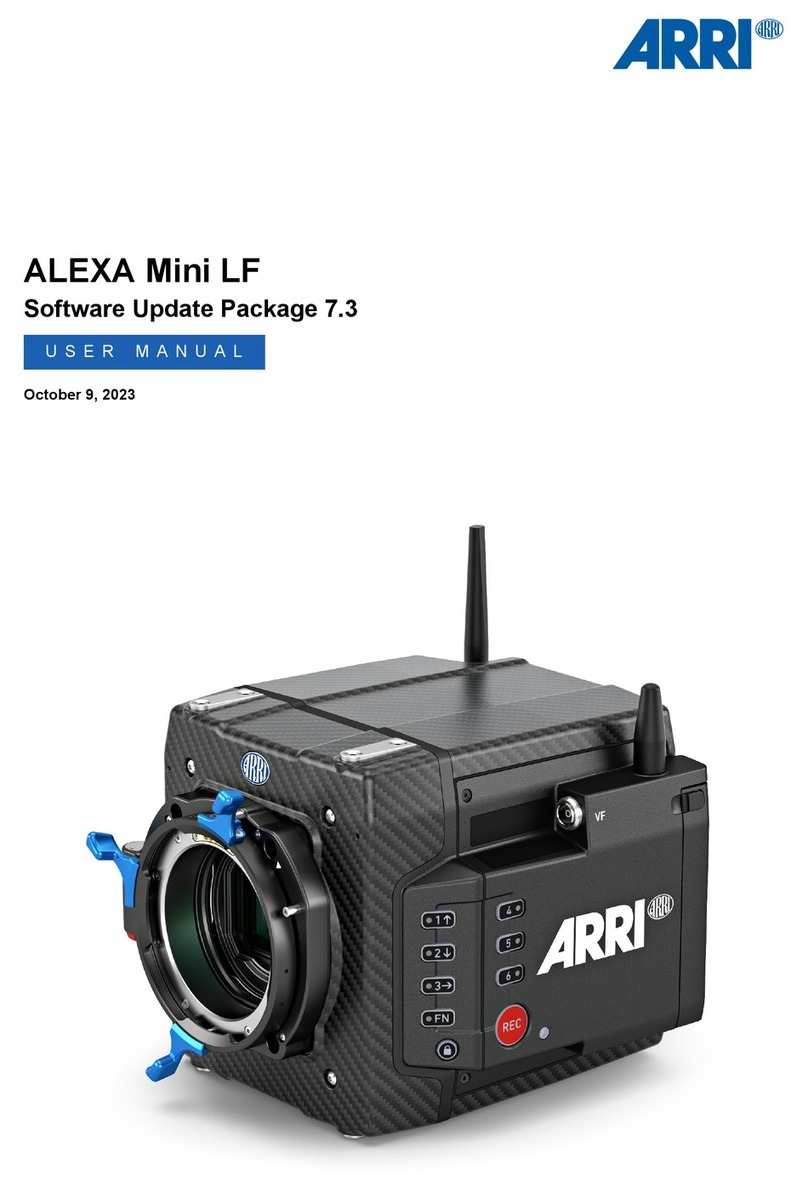
ARRI
ARRI ALEXA Mini LF User manual
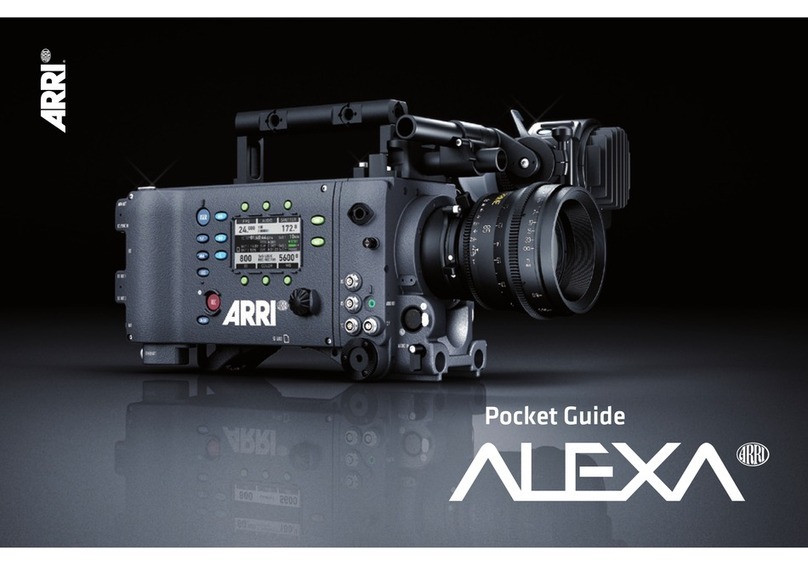
ARRI
ARRI ALEXA User manual
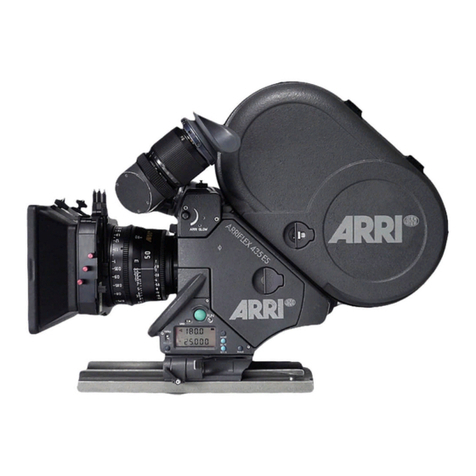
ARRI
ARRI ARRIFLEX 435 XTreme User manual

ARRI
ARRI ALEXA User manual
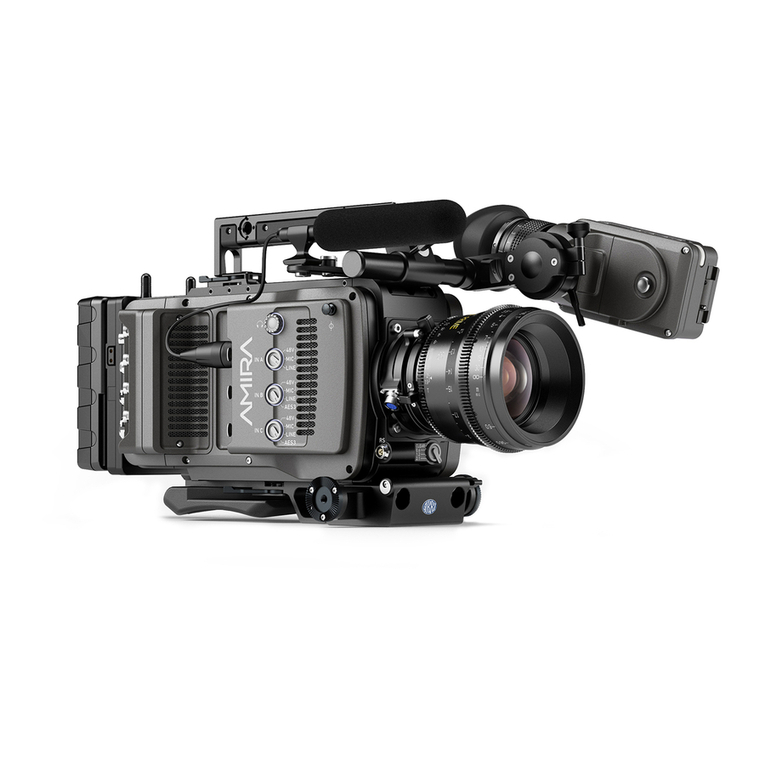
ARRI
ARRI Amira User manual

ARRI
ARRI ALEXA 35 SUP 1.0.3 How to use
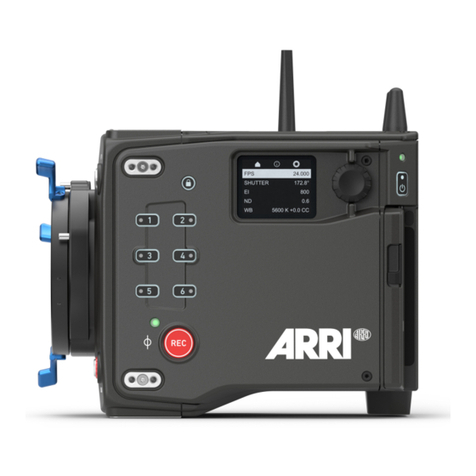
ARRI
ARRI ALEXA 35 User manual

ARRI
ARRI ALEXA 35 User manual
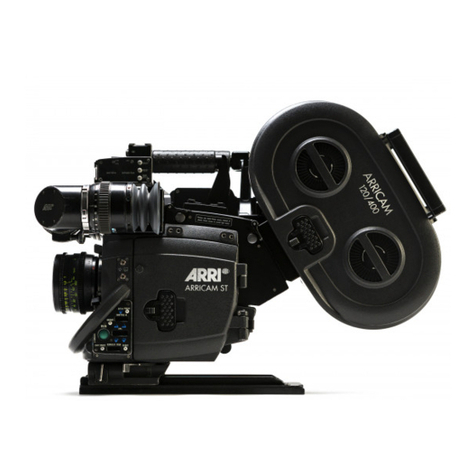
ARRI
ARRI Arricam System User manual
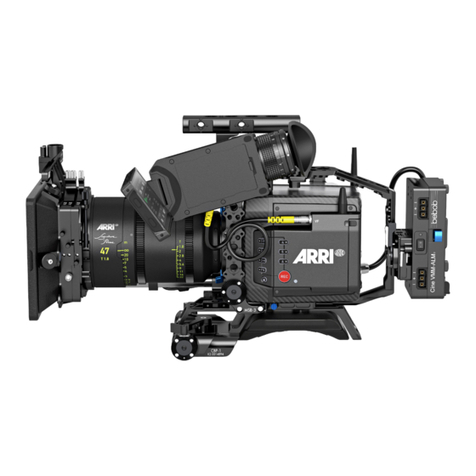
ARRI
ARRI ALEXA Mini LF How to use
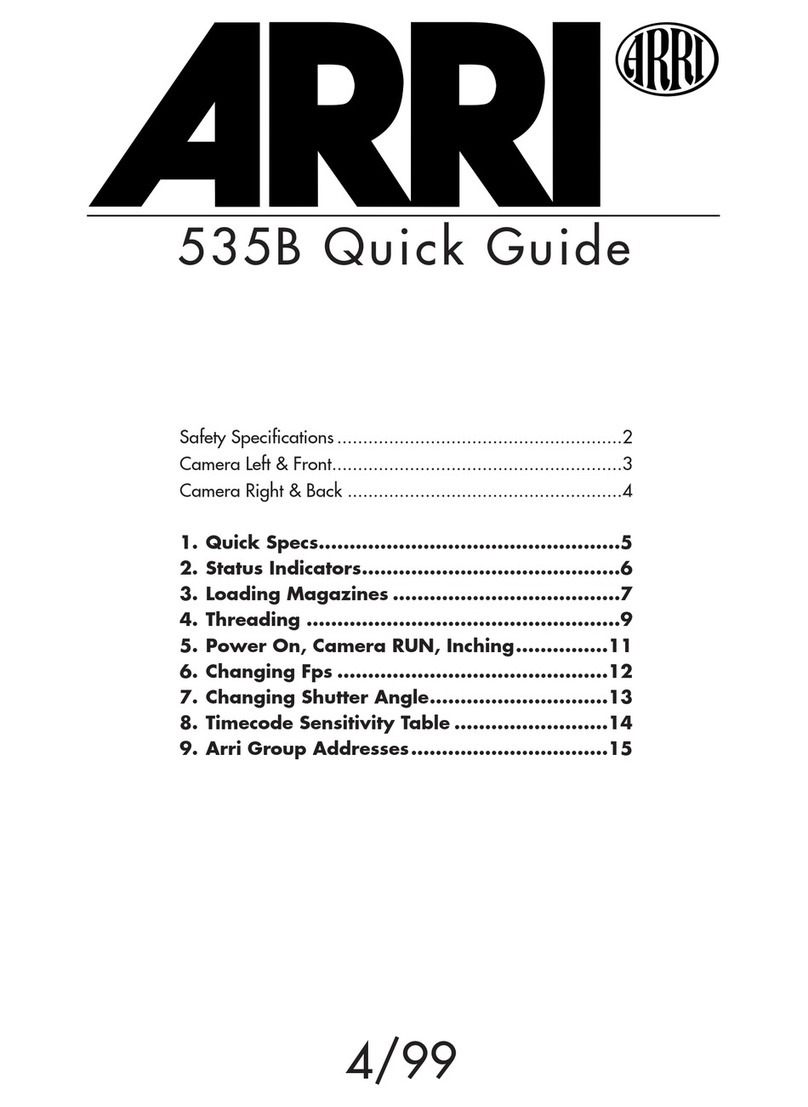
ARRI
ARRI 535B Operator's manual

ARRI
ARRI ARRIFLEX 435 XTreme User manual

ARRI
ARRI ALEXA User manual

ARRI
ARRI ALEXA Mini User manual
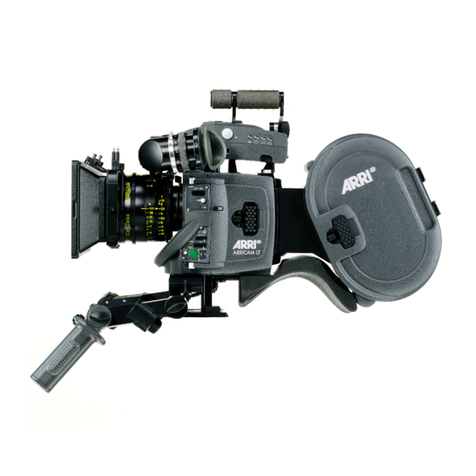
ARRI
ARRI Arricam Lite User manual
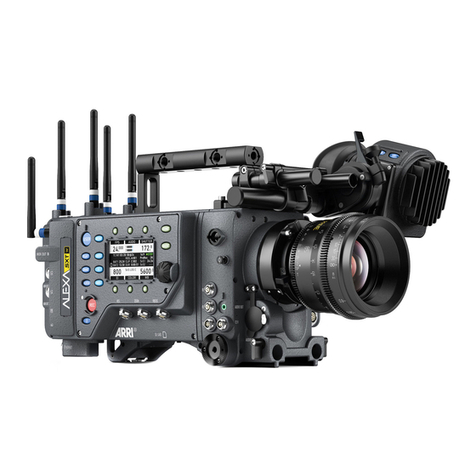
ARRI
ARRI ALEXA SXT W User manual

